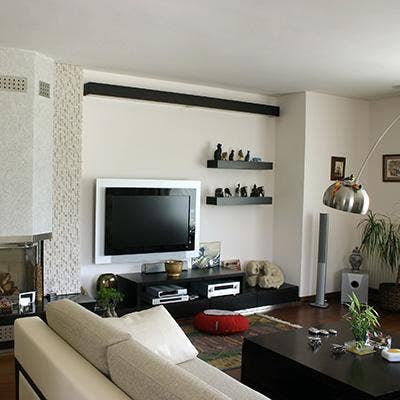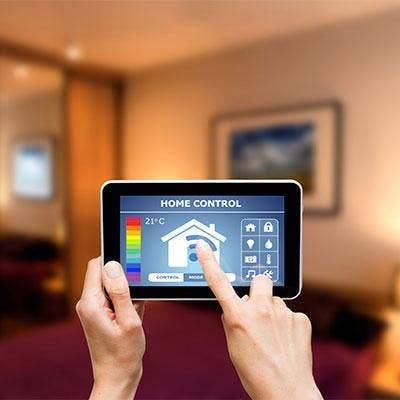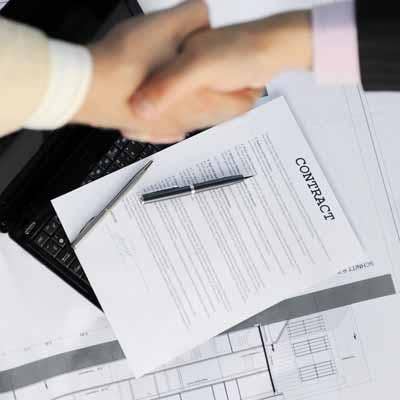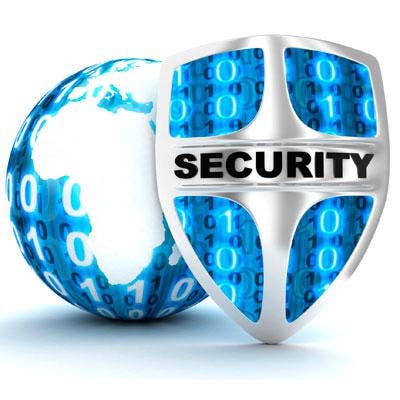IoT Channel Chronicles: TSP CEO Addresses The Building Automation Opportunity – In Luxury Homes

Bringing Tech To High-End Luxury Homes
TSP, a Boston-based solution provider, is best known for its Apple expertise. But when the Apple partner isn't consulting clients about Macs, iPads and iPhones, it's working in a completely different space – high-end luxury homes, particularly in Iceland.
CEO Bacem Moussa said TSP has been working in the building automation space for about five years, and works with both commercial buildings and luxury homes to implement Internet of Things services.
"It's a never ending story - the security threats and IT are changing, and that's where we're seeing the need for a support structure and service structure, similar to what we've had in the business IT world," he said.
Here are excerpts of CRN's interview with Moussa about the areas of opportunity in building automation for the channel.

How did TSP get involved with building automation?
We came at it differently from many other integrators. Typically, integrators who were already doing home theaters, audio, and video integration would move toward home automation. So, if you look at the vast majority of integrators, they come at the problem from that perspective.
For us, TSP, we have been working with businesses to support their Apple-focused technology. We also have the experience building networks to work as the foundation of these systems. Networks are very important because they are the backbone of security. In order to have a secure IoT environment, you need to secure both the outside and inside. We started to understand that. We had the opportunity to work on a few projects with some folks who knew us because we supported their IT infrastructure at work.
So that evolution has happened over a few years, and we're still evolving it. It's a never ending story - the security threats and IT are changing, and that's where we're seeing the need for a support structure and service structure, similar to what we had in the business IT world.

When you began building out services around building automation, where did you start?
We selected a tech stack that we felt is business class and is solid to support home automation. The reality of home automation is that it's a bunch of computers and sensors working together. There is audio-visual and lighting aspects, but at the heart of it, it's a bunch of computers that need to be secure and reliable. When you press a button to turn on lights, you want them to turn on.
We then sold a support contract built in with products, and we decided on a three-year contract. We found that there was a market for that type of approach, and the results were very good. Now, this is a fully developed line of business.

What types of vendors are you working with for building automation?
We look at dozens of options [for building automation], so we pick a system, and pick the components. We work with an array of vendors, but we really have technology stacks, and various components that we have tested and have concluded they are reliable enough.
So we use [luxury home automation vendor] Savant for the control side of things, and [lighting control vendor] Lutron [Electronics] for the lighting and shade control.
There are other pieces of the automation, such as audio-visual, TV, cable boxes, alarm security systems or access control doorbells. We're constantly pushing the limits and testing products.

What does the lifecycle look like for home automation?
We assume a life of three years, so a three-year investment that has to be renewed. Not everything gets renewed in three years. Every three to five years, the whole stack gets updated. There are some devices that are built into the home, and those have much higher and longer life. We tend to select those carefully; they are part of the architecture. Their life cycle is more similar to that of a bathroom, for example. But the tech, the computers, the software, etcetera, we assume has a life of three years, and then we continuously monitor and update them. That tends to reduce the bad experiences that customers have, so that things continue to work and disruption is kept at a minimum.

Walk us through what a typical project looks like for TSP. Where do you start and what are some of the areas you focus on?
We focus on the architecture, we focus on the design of a system, the selection of various components. We start with the homeowner – what they want to achieve. That's the preliminary work.
We design the system, select components, and go to great lengths to specify to a high degree of details every single connection programming routine and how every interface touches each other, and we build a set of plans, not unlike what an architect would do.
Our plans come on top of those layers that lighting designers and structural engineers would build. We build on those plans to add additional layers of details. In the implementation phase, we implement IT components, and then we subcontract to low-voltage vendors and installers. In the end, it's about testing and looking through the documents. We need to adapt to the changes that homeowners request; they typically are adapting and changing.

So, how long does the consultation, design and implementation of the project typically last?
It depends on the scale. We have two branches of business – one is for commercial clients, with meeting rooms and commercial spaces, and the other is for residential clients.
We typically get involved right at the beginning of the construction. Then we develop our designs and then implement as the construction goes on. We initially consult with [clients], and then wait for them to get to the point where they install the lights or shades, and step in at that time. So we'll have projects going for six months or even a year. As clients continue to change the designs, we'll follow their scheduling.
On the commercial side, it goes much faster, because the building process goes faster. The cases where we're implementing in a space could take a week on site, and takes a couple of weeks to design for the system and develop the detailed plans. So that's in the three- to six-month range, something parallel to a construction project starting slow and then towards the end accelerating.

What kind of interest are you seeing from both branches – the home automation space and commercial building automation space?
We're seeing interest from both and I don't know if it's because we're seeking both. Both areas are accelerating. On the commercial side, it's about differentiation, having the better experience in a space, and the projects tend to be larger. We're noticing that on the commercial side, people typically have budgets with specific line items … for funding a solution that people want.
On the home automation side, we're seeing people expect those functions in the luxury market. They expect to have that type of experience. Some clients want the basics – lighting and shades- but others want it all. They want a full experience. We see a lot of that expectation of the home automation to be part of the home at the high end.

How are your projects working with commercial clients and homeowners different?
If we look at the small commercial space … the end user has seen these things. They know that they're talking on the phone, they're looking at the TV screen, they know there's a networking and infrastructure allowing them to use audio and visual. In that space, we need to show improvement of experience. On the residential side, it's typically developing a new experience. They've seen home automation at a friend's house, but it's something that's new for them. There's almost a discovery process that the homeowner is seeking.

How do you deal with security in the home automation space?
The way voice command [Amazon digital assistant] Alexa works is you talk, that data goes to the server, and then comes back as a command -- and that's a huge security risk. In the home, most people won't worry about it. But in the high-end home, we need to present homeowners with the reality of it and find the right solutions to solve this security issue with consumer-oriented products.
We start with security. ... Security comes first, and then we build everything around that.

Talk about areas for future opportunities in your main markets, particularly Iceland, where you do most of your work around luxury home automation.
In Iceland, we're pushing this market and expanding it. We're almost building the market. It's there, but it's in it's infancy. We're seeing a lot of interest in home automation – especially in the hotel space. Iceland is seeing amazing growth in tourism; the country has ... 2 million tourists going through the country and over the past couple of years, as the country sees more tourism, more hotels are being built.
Now hotels are trying to differentiate themselves, trying to build higher international, best-of-class hotels. That's where we're finding our market, these hotels, in addition to a number of high-end villas and summer homes.

Is there a big opportunity here for the channel?
Absolutely. I think there's tremendous growth, and a lot of space for people to have an impact. We believe there's a potential for growth on the service side of things. You can implement this technology, but how do you service them?
In older models, you can show up and fix them like a plumber, but we think there's tremendous growth possible in finding the right way to service these implementations. As the Internet of Things starts to take hold in the industrial space or the commercial building automation space … that will increase demands for our types of services. People will see IoT at the consumer grade level – with Apple, Google and Amazon's products, and then they want something at a much higher quality.